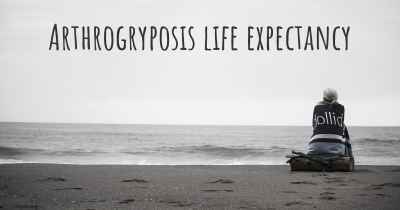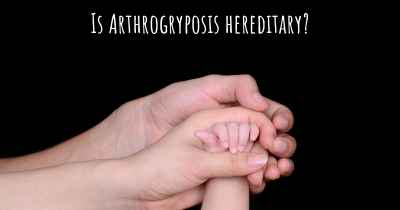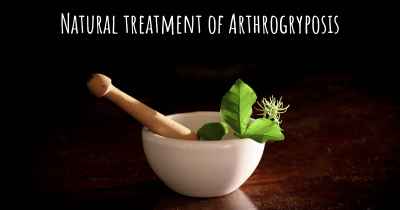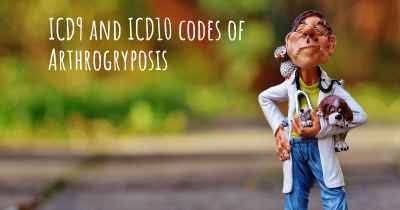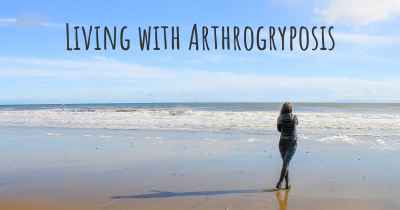Arthrogryposis diet. Is there a diet which improves the quality of life of people with Arthrogryposis?
Are you aware of a diet that can improve the quality of life of people with Arthrogryposis? Is there a diet that is suggested to avoid when having Arthrogryposis? See if there is a diet that can improve the quality of life of people with Arthrogryposis, recommended and to avoid food when having Arthrogryposis

Arthrogryposis Diet: Improving Quality of Life
Arthrogryposis, also known as arthrogryposis multiplex congenita (AMC), is a rare condition characterized by multiple joint contractures and muscle weakness. It affects individuals from birth and can significantly impact their mobility and overall quality of life. While there is no specific diet that can cure or reverse arthrogryposis, a well-balanced and nutritious diet can play a crucial role in improving the overall health and well-being of individuals with this condition.
The Importance of Nutrition
Nutrition plays a vital role in supporting the overall health and development of individuals with arthrogryposis. A well-planned diet can help manage associated complications, promote muscle strength, support bone health, and enhance overall energy levels. It is important to consult with a healthcare professional or a registered dietitian to develop a personalized nutrition plan based on individual needs and requirements.
Key Nutrients for Arthrogryposis
While the specific nutrient needs may vary from person to person, the following nutrients are generally important for individuals with arthrogryposis:
- Protein: Protein is essential for muscle growth, repair, and maintenance. Including adequate amounts of lean meats, poultry, fish, eggs, dairy products, legumes, and plant-based protein sources can help support muscle strength and function.
- Calcium and Vitamin D: These nutrients are crucial for bone health and development. Including dairy products, fortified plant-based milk alternatives, leafy green vegetables, and calcium-rich foods can help meet the calcium requirements. Exposure to sunlight and consuming vitamin D-fortified foods like fatty fish, eggs, and fortified cereals can support vitamin D levels.
- Omega-3 Fatty Acids: Omega-3 fatty acids have anti-inflammatory properties and can support joint health. Including fatty fish like salmon, mackerel, and sardines, as well as walnuts, flaxseeds, and chia seeds, can provide a good source of omega-3 fatty acids.
- Vitamin C: Vitamin C is important for collagen synthesis, which is essential for connective tissue health. Including citrus fruits, berries, kiwi, bell peppers, and leafy green vegetables can help meet the vitamin C requirements.
- Iron: Iron is important for maintaining energy levels and preventing fatigue. Including iron-rich foods like lean meats, poultry, fish, fortified cereals, legumes, and leafy green vegetables can help meet the iron requirements.
- Antioxidants: Antioxidants help protect cells from damage caused by free radicals. Including a variety of fruits and vegetables, especially those with vibrant colors like berries, tomatoes, spinach, and sweet potatoes, can provide a good source of antioxidants.
Considerations for Arthrogryposis
While a well-balanced diet is important for individuals with arthrogryposis, there are a few additional considerations to keep in mind:
- Hydration: Staying hydrated is crucial for overall health and muscle function. Encouraging regular fluid intake, especially water, can help prevent dehydration.
- Weight Management: Maintaining a healthy weight is important to reduce stress on joints and muscles. A healthcare professional or dietitian can provide guidance on appropriate weight management strategies.
- Assistive Devices: Some individuals with arthrogryposis may require assistive devices for eating, such as adaptive utensils or modified seating arrangements. These devices can help improve independence and ensure adequate nutrition intake.
- Feeding Challenges: Some individuals with arthrogryposis may experience difficulties with feeding due to muscle weakness or coordination issues. In such cases, working with a speech therapist or occupational therapist can help address these challenges and ensure adequate nutrition intake.
Conclusion
While there is no specific diet that can cure arthrogryposis, a well-balanced and nutritious diet can significantly improve the quality of life for individuals with this condition. Adequate intake of key nutrients, such as protein, calcium, omega-3 fatty acids, and vitamins, can support muscle strength, bone health, and overall energy levels. It is important to work with healthcare professionals and dietitians to develop a personalized nutrition plan that meets individual needs and addresses any specific challenges associated with arthrogryposis.
